Problem Scoping Chapter Notes | Artificial Intelligence (AI) for Class 9 PDF Download
AI Project Cycle

What is AI project cycle mapping?
AI project cycle mapping involves aligning the specific steps of an AI project with the broader steps outlined in the AI project cycle.
For instance, let's consider the steps involved in a Pest Management project and see how they correspond to the AI project cycle.
Why do we need an AI Project Cycle?
The AI Project Cycle is essential for several reasons:
- Increased Efficiency: The AI Project Cycle enhances efficiency by providing a structured framework that streamlines the project development process. This means that solutions can be created more quickly and easily.
- Modularity: The cycle's modular approach allows complex issues, such as cotton diseases, to be broken down into simpler, manageable tasks. This modularity makes it easier to tackle specific aspects of the problem without getting overwhelmed by its complexity.
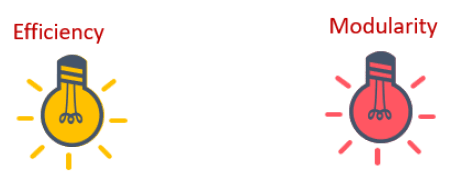
Conclusion: In summary, the AI Project Cycle is crucial because it improves efficiency and enables the division of intricate problems into simpler tasks. This structured approach ultimately leads to faster and more effective solutions.
Introduction to AI Project Cycle: Problem Scoping
AI Project Cycle refers to the continuous process involved in completing an AI project, starting from Problem Scoping to various other stages that guide the project.
- The AI Project Cycle aims to create better AI projects with ease, complete them more quickly, and enhance the understanding of the entire process.
- Problem Scoping is the initial step where the issue to be addressed by the AI project is defined.
Session Preparation
Logistics: For a class of 40 Students [Group activity – Groups of 4]
Let us now start scoping a problem. Look around you and select a theme which interests you the most. Suggested themes are:
You can either select any one out of these or you can think of one on your own. For more options, you can also refer to the 17 Sustainable Development Goals we discussed in the Purpose module.
Your selected theme is:
Why did you select this theme?
As we know, a theme is a broad term which covers all the aspects of relevance under it.
For example: In Agriculture, there are pest issues, yield rates, sowing and harvesting patterns, etc. all being very different from each other but still a part of the Agriculture theme. Thus, to effectively understand the problem and elaborate it, we need to select one topic under the theme.
Some examples are:
- Theme: Digital Literacy Topics: Online learning platforms, digital awareness, e-books, etc.
- Theme: Health Topics: Medicinal Aid, Mobile Medications, Spreading of diseases, etc.
- Theme: Entertainment Topics: Media, Virtual Gaming, Interactive AVs, Promotions etc.
Our Sun is here to throw more light on this! Go back to your selected
Theme, select various Topics related to your theme and fill them up in the rays of this sun.

4Ws Problem Canvas
The 4Ws Problem canvas helps you in identifying the key elements related to the problem. Let us go through each of the blocks one by one.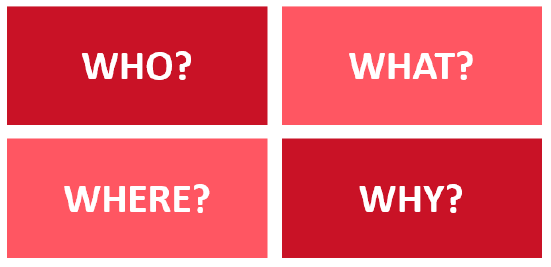
Who?
The "Who" block is essential for analyzing the individuals affected, both directly and indirectly, by the identified problem. Here, you will identify the stakeholders involved and gather information about them. Stakeholders are the people who experience this problem and would benefit from the proposed solution.
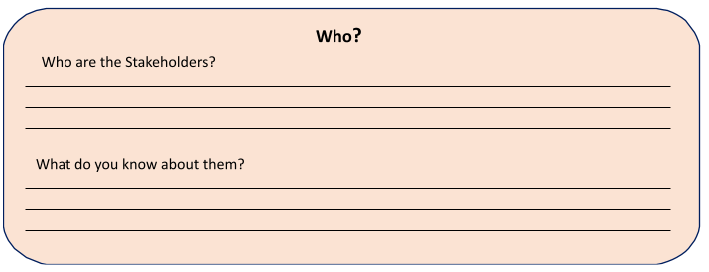
What?
The "What" block encourages you to assess the resources and evidence you have regarding the problem. At this stage, it's crucial to define the nature of the problem and provide proof of its existence. This may include gathering evidence from sources such as newspaper articles, media reports, announcements, and other relevant materials.
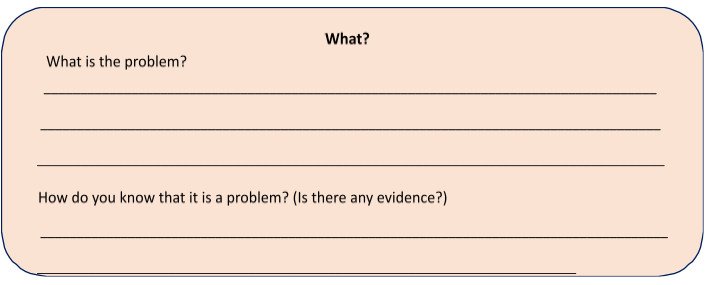
Where?
Where refers to the location or context in which the problem occurs. It helps to specify the geographical area, environment, or situation where the issue is prominent. This could include specific regions, communities, or settings where the problem is observed.
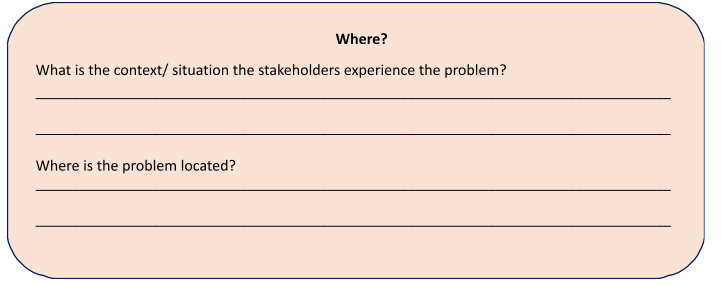
Why?
This block focuses on the reasons behind solving the problem. It encourages identifying the benefits that stakeholders will gain from the solution and how it will positively impact them and society as a whole.
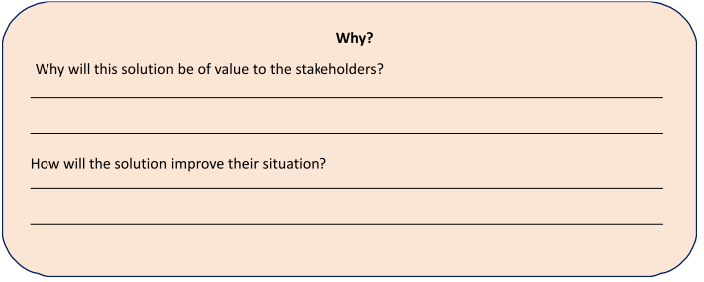
Problem Statement Template
Problem Statement Template is a tool used to summarize all the key points from the 4Ws Problem canvas into a single template. It serves as a reference for understanding the core elements of the problem in the future.Problem Statement Template with space to fill details according to your Goal:
 Now let us create a problem statement template for our Pest management case study
Now let us create a problem statement template for our Pest management case study
4W canvas for Pest Management
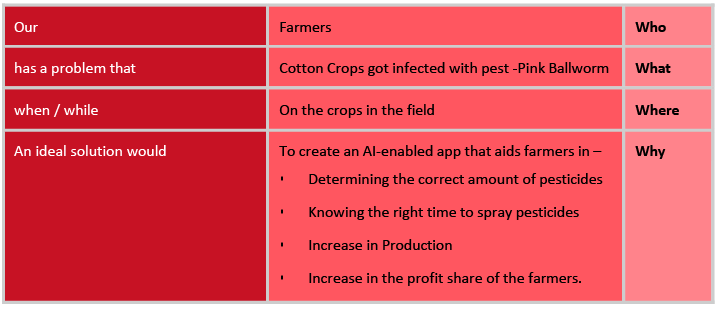
|
32 videos|57 docs
|
FAQs on Problem Scoping Chapter Notes - Artificial Intelligence (AI) for Class 9
| 1. What is the AI project cycle? |  |
| 2. Why is the AI project cycle important? |  |
| 3. What is involved in the problem scoping phase of an AI project? |  |
| 4. How does the 4Ws Problem Canvas work? |  |
| 5. What is a problem statement template in AI projects? |  |





















